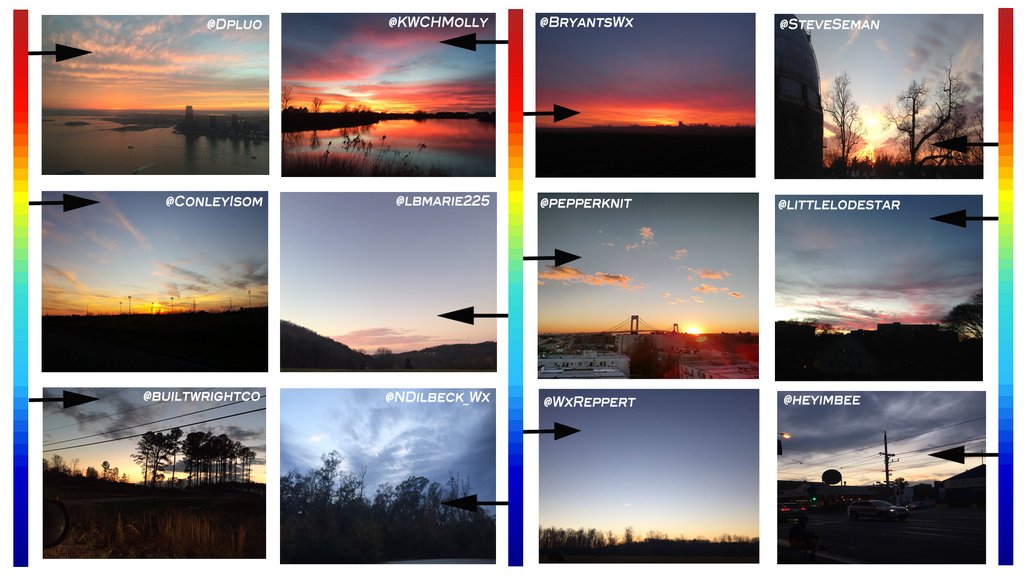The idea for a “Sunset Model” was sparked from my interest in both meteorology and photography. It is important to have both meteorological models as well as models that can be very useful and sensible; a way to communicate certain phenomena that meteorological data can output for public use. Because of this, Ben Reppert, Steve Hallett, and I (Jacob DeFlitch) began to create the “Sunset Model.”
There are numerous meteorological factors used within the model, however we do not plan on announcing the specifics at this time, but instead release a quick summary of the variables in the model. The model itself takes primary elements into account: Moisture, pressure, and cloud cover. Using our knowledge of the atmosphere, we started with a basic idea of what variables are important, and their relative importance to one another.
We quickly realized that some things were more important than others, and decided on a weighting scheme. After many trial runs and verifications, we weighted moisture the most. Our model ingests data from the high resolution, 4 km NAM, allowing us to account for values at all levels of the troposphere. Because of this, we took into account all levels of the troposphere from the surface, to as high as 200 millibars, and weighted each level accordingly, with the upper-levels having the most weight. Closer to the surface we reduced the weight substantially for moisture as it restricts the sun from refracting copious amount of light. Pressure, as well as the change in pressure over time was the next highest weighted factor as it helps recognize areas where cloud cover may dominate as well as FROPA’s. Finally, we included general cloud cover, to better account for regions where it is overcast, and help the model display it that way.
As for the scale, we understand there are numerous definitions for the criteria: Vivid, average, and poor. However, as a landscape photographer, there are certain variables I look for each evening before making the decision to take time out of my day and photograph the sunset. The most important factor I look for is sky cover, and more specifically, the existence of high clouds over the area. High clouds not only provide moisture to refract the sunlight, their ‘wispy’ formation also provides “texture” to the sky and are high enough in the atmosphere for the sun to scatter light below. Think of these as a movie theatre screen, in which light can be projected upon.
Because of this, we weighted high clouds the most as stated before, and consider this necessary for a “Vivid” sunset. In general, regions that are displayed “Poor” in the model, are areas of near 100% of total cloud cover, and also areas that are projected to experience precipitation around sunset time. The ‘hard to define’ area comes in between the two. To some, a clear sky at the time of sunset may be the definition of a great one. In this model, it is our intent to weight a clear sky sunset as average, and therefore it would show up as green or light yellow. The oranges and reds are really the areas where we are trying to show that the sunset will be one of those that makes you go ‘Wow’.
It is important to keep in mind that since this is based off of the 4 km NAM, if the 4 km NAM is not handling a particular area well on a given afternoon, it then may not handle the sunset perfectly.
